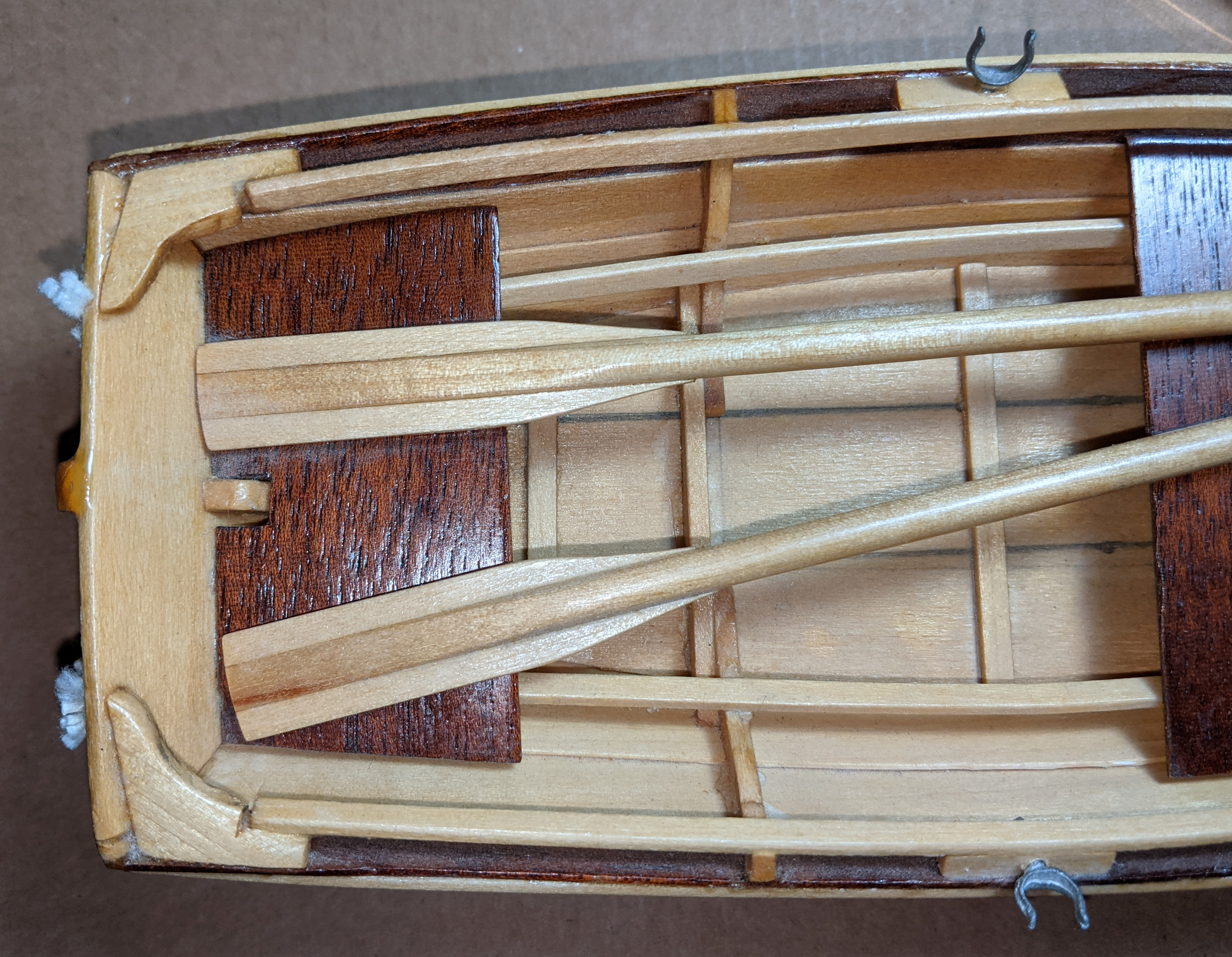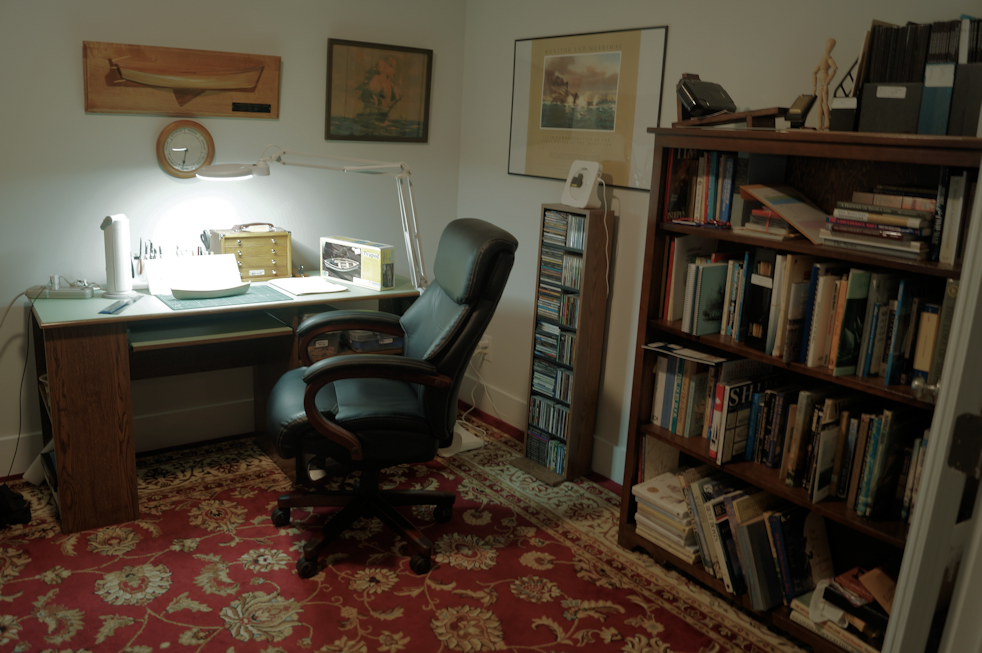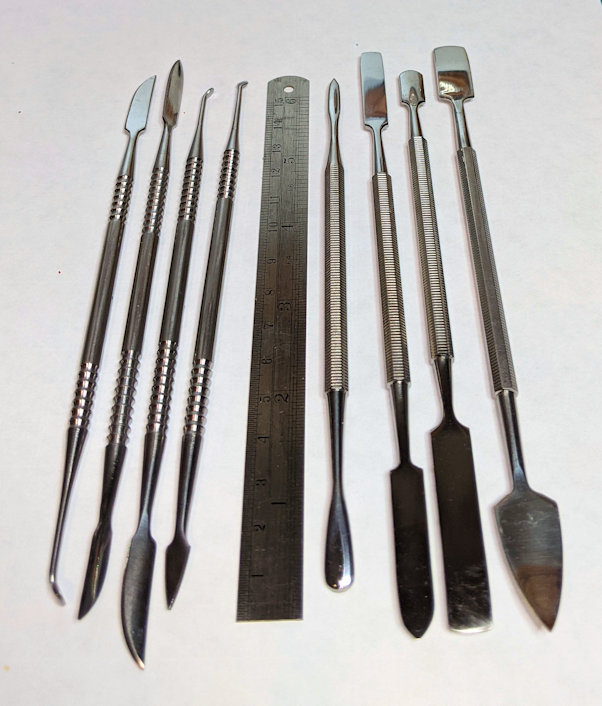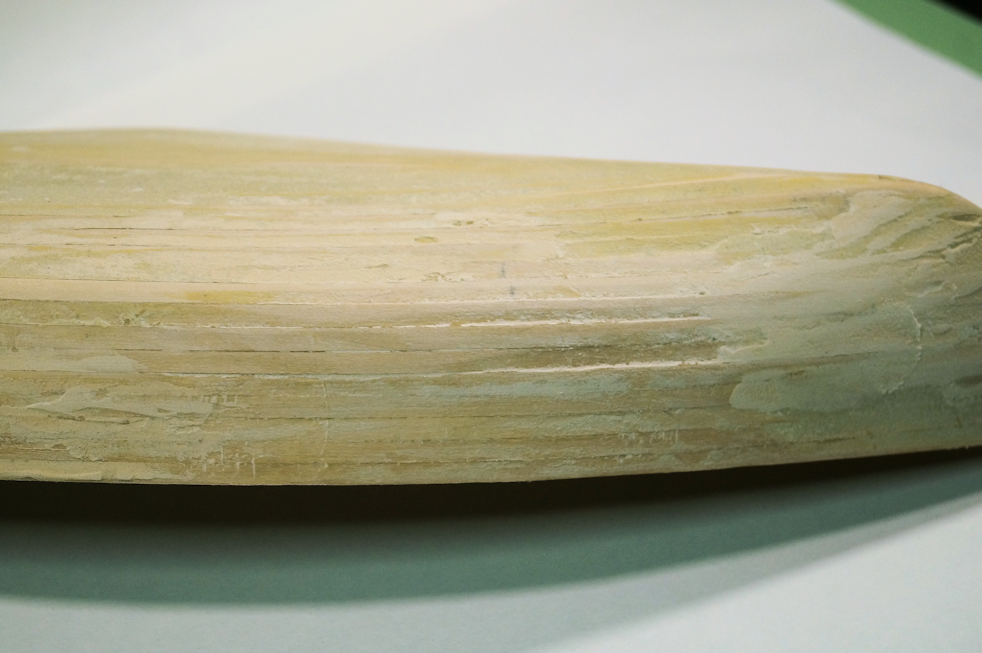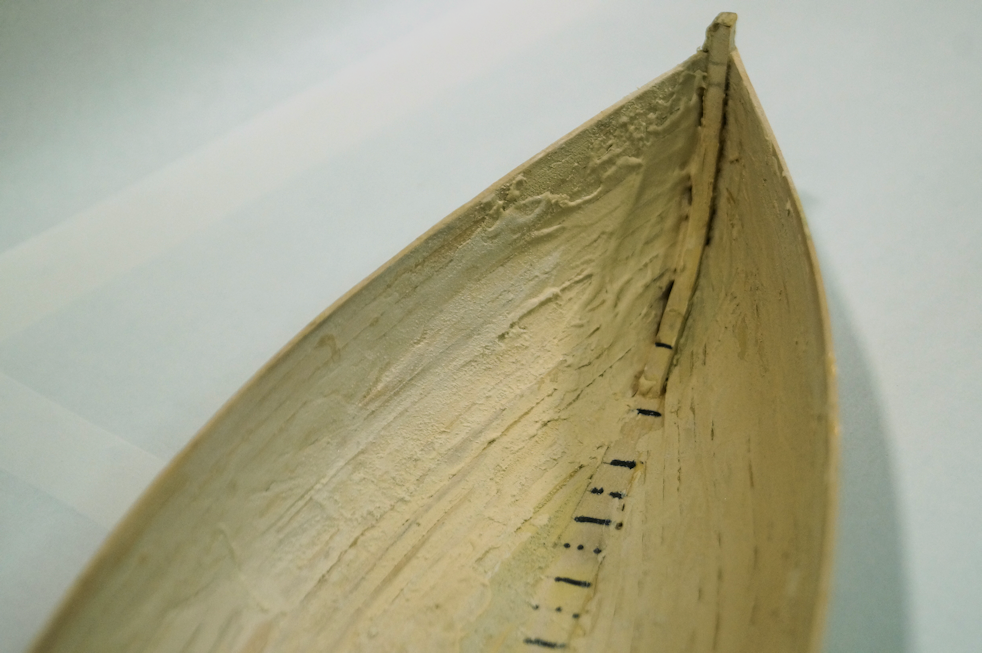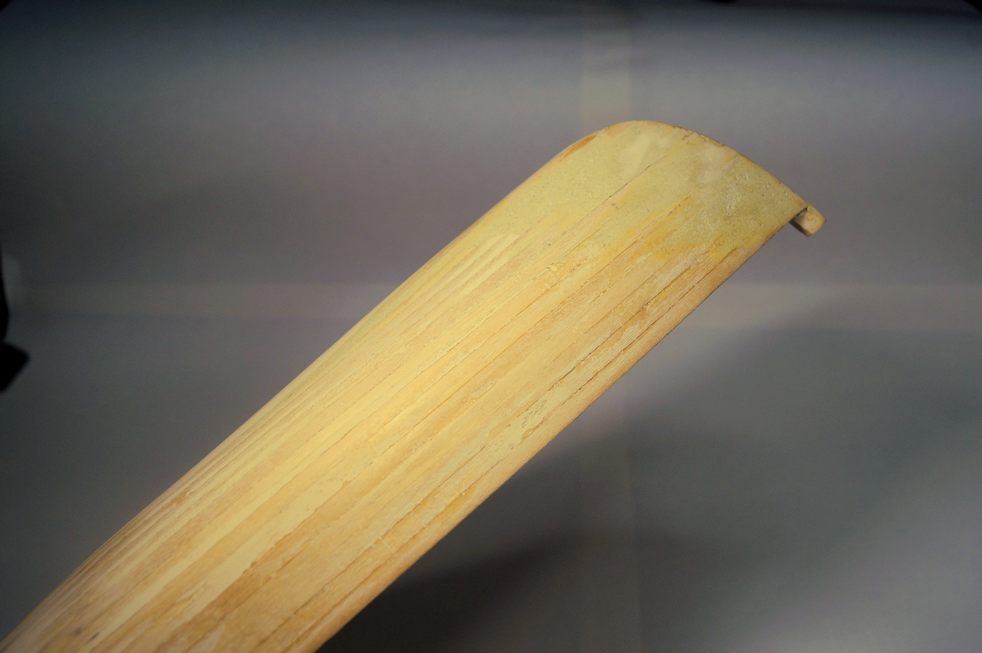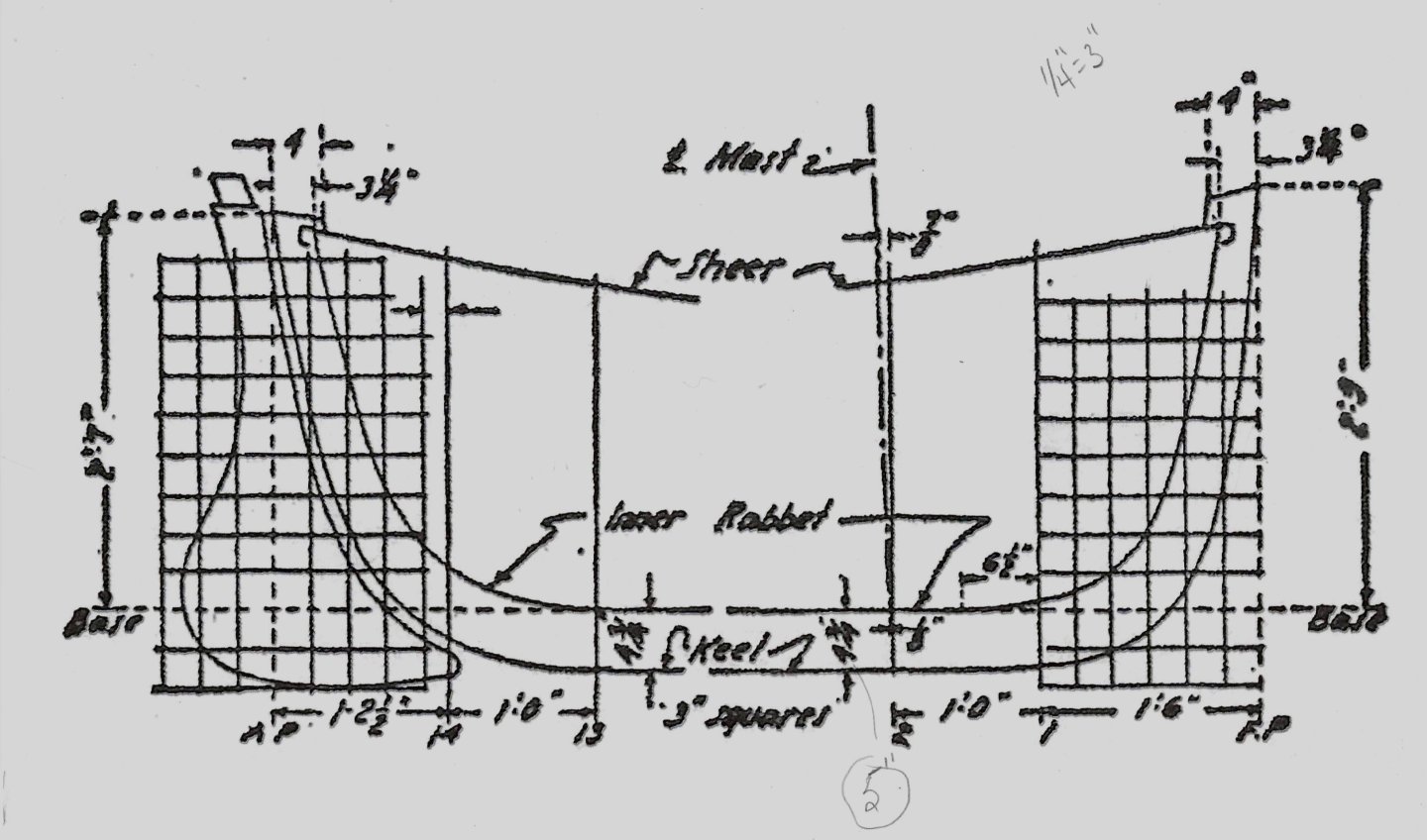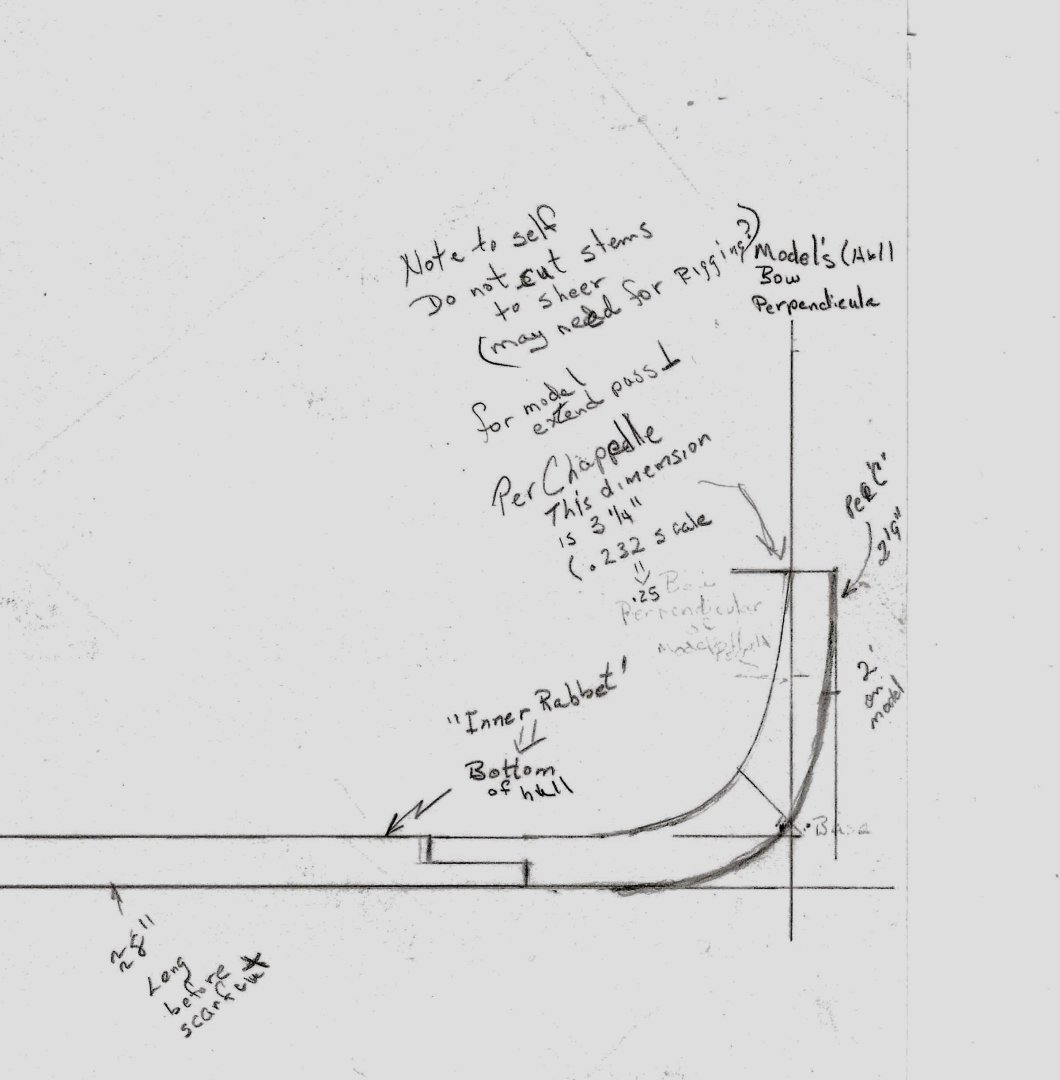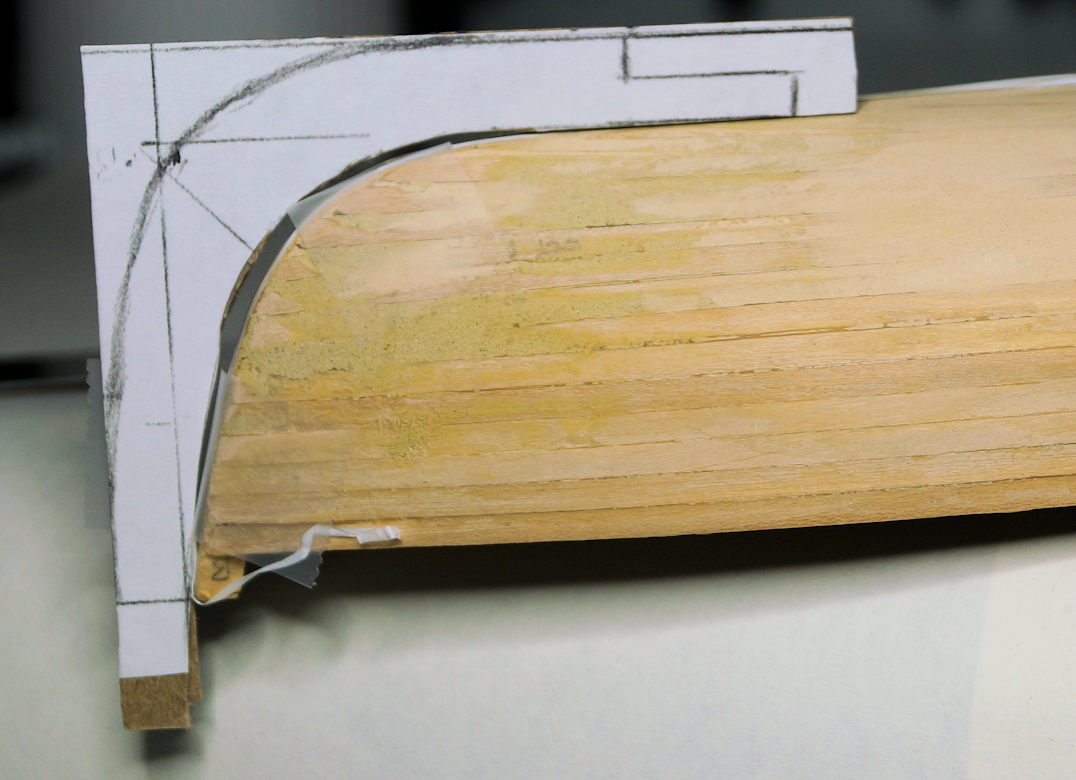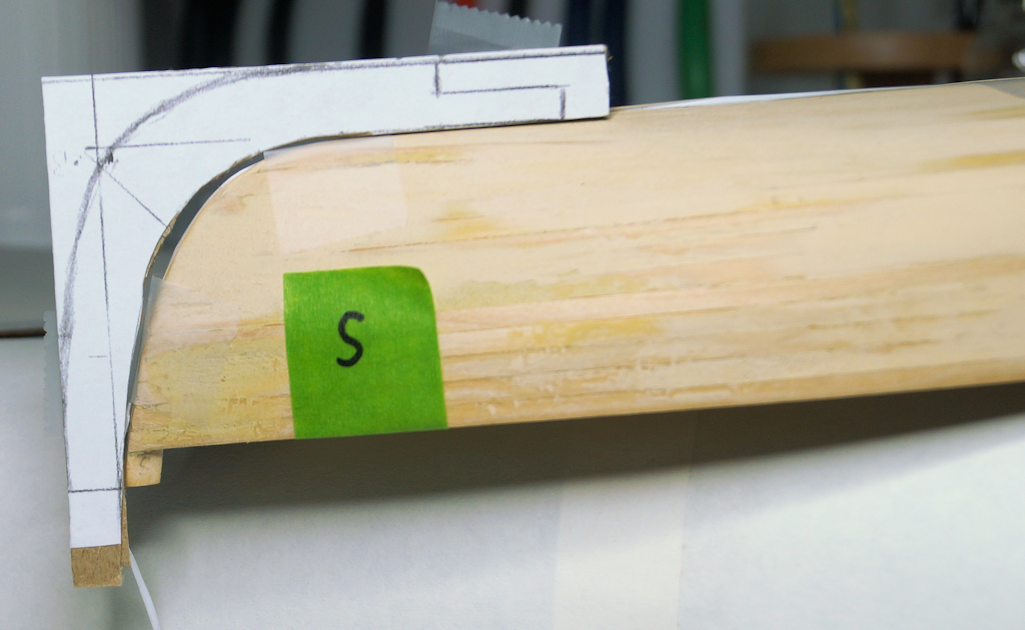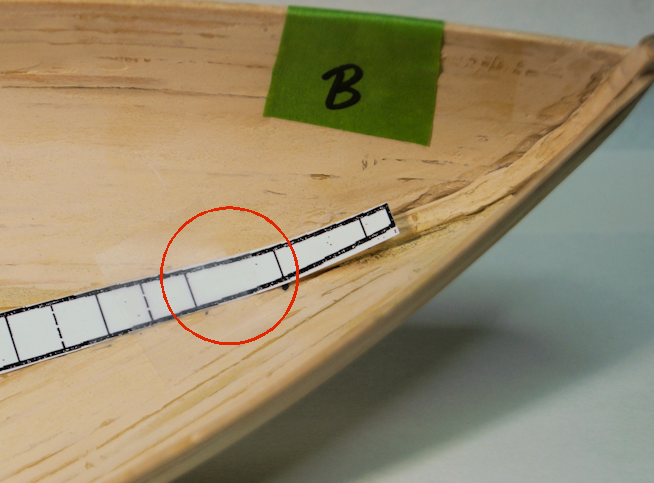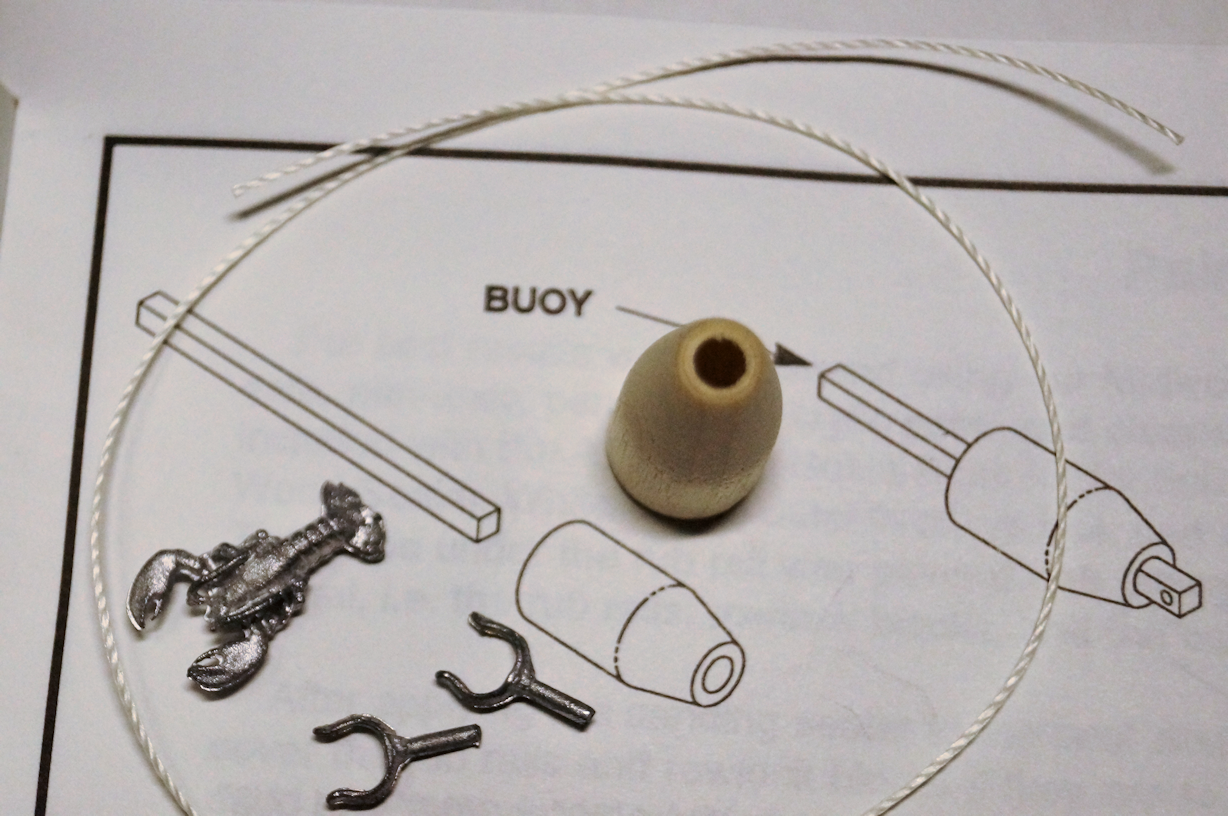-
Posts
907 -
Joined
-
Last visited
Content Type
Profiles
Forums
Gallery
Events
Everything posted by robert952
-
I'd recommend: try the Dory again. There's several build logs hereon MSW that will help you with building that specific model. (Just search Grand Banks Dory. You'll find many on the Model Shipways model. (Also a couple other companies that follow similar procedures for building.) If you start a build log, you will get some followers (and lurkers) who can give advise and tell their experience if you run into something you don't know or understand. You can ask for advise there. If you have a specific questionpn some aspect of modeling (paint, glue, etc), search those items. If you don't find a thread, start a new thread in the appropriate sub-forum. If you mess up on something (all of has 'been there, done that') we can likely give some advise and tips on how to correct the error. Take your time. Building models is ALWAYS a learning process. Welcome aboard.
-
This is why we read these logs. This was an ah-ha! moment for me. I have a similar structure on a mast that has an iron hook at the top of the mast for the block that lifts a spar. I was wondering how to do that. Now I know. Thanks for taking the time to provide the details. It's much appreciated.
- 201 replies
-
- Oyster Sharpie
- first scratch build
-
(and 1 more)
Tagged with:
-
Yep. Your build is why I looked at the interior, too. I agree. On the good side, as you pointed out, the seats will hide some of the issues particularly on the ends.
- 44 replies
-
- maine peapod
- peapod
-
(and 4 more)
Tagged with:
-
Preface for this post For those who are following this build, thanks for your patience. I hope you haven't lost interest in continuing your read of my log. I finally feel I have done enough of the projects needed to turn our new house into a home. At least to the point where I don't feel guilty working on this build instead of some other home project. Just to show off my new digs, here's my model assembly area. Out of frame to the left is my computer desk. Any 'dirty tasks' like sanding or heavy cutting I do in the garage. The Admiral doesn't like the idea of sawdust in the rug. (Well, I agree with her. I do keep a vacuum cleaner in the room. And I use it regularly during my work sessions. But still, we all know the mess we can make.) My last true entry build was September 8, 2023. Hard to believe (in some respects) it's been over thirteen months. Yet, with all that went since then, I feel accomplished at what I have done in RL. There's still a lot to do at home. But they are longer term items. Like the yard/gardening work which I have as a three to four year plan. Enough jabbering on to the build. Filling and sanding With the nearly 14 month lapse since the last time I look seriously at this build, at the end of October, 2024 I reviewed this log, looked at my build so far, and reviewed my plans for the model. Per the check boxes in the instruction manual, the hull gets sanded at this point. I started on the outside as that's easy enough. I revitalized my filler and had read somewhere over past year that thinning the filler helps get it into small gaps. Since I plan on painting the hull, that seems a good idea. While looking at the inside of the hull I saw a lot of sharp corners which will be hard to fill and sand. I wanted to find a way to do that task a bit easier. I went to my local Hobby Lobby and found these two kits of stainless steel tools. On the left of the 6" ruler you'll see a shaping set of tools some with sharp(ish) blades. The spatulas on the right have many shapes, a few of which were quite useful. At $11 US each, I thought them to be a good investment. They proved helpful with the tasks like mixing and spreading the filler. I repeated the process three or four times and things didn't go as smoothly (pun intended) as I thought. My guess is that I wasn't consistent in mixing up the filler which caused air pockets or something. I am not sure what went awry. But I got to a point to where I called the hull 'faired enough' for now. I'll do a bit more filling and sanding and seal it before painting. I will likely paint the hull after installing floorboards and ribs and before the seats and risers go in so I can cover all the nooks and crannies inside. For now, I'll work on the next part of the my building plans. New Keel The original model puts a false keel on the hull. However, I planned from the beginning to add a sail and rudder per the 1937 version in Chapelle's book. (See post #1 above for details and the plan lines for that boat.) The book also has details for this boat on the keel, rudder and mast step. I considered three factors at this point. A. How to create a template(s) that fits. I started out with the model's diecut opening for the stem pieces (see log entry #16). The outside edge of that hole is my starting point for the new stem and keel assemblies. The above drawing covers a boat of 15 ft, 8-1/2 in. The kit models a 14 ft. vessel. I will have to fudge the numbers a bit. However, the results will be close and proportional. I also can tweak a few other things and adjust on the fly as (and if) needed. For example, the keel is 4-3/4 in. deep per the drawing. I will start as if it's 5 inches and can shave/sand down to the dimension. Also, I will not cut the wood right to the line of the template and can shape and fit the pieces as needed. More on this in a bit. So, literally, I went back to the drawing board. I had done a 'proof of concept' early on (post #16 above) and had an idea of what I wanted to do. I needed to be more accurate on the template and determine how much adjustment I would need. Knowing my ability to mess up things, I keep the concept of having to do something over foremost. That leads me to a three piece solution: two stems and a keel piece. The stems will extend far enough to reach the flat bottom of the hull. Then I can cut the keel to fit between the stems using a straight cut plank and no need for any curve. A scarf joint will help fit the pieces together. Now a moment of truth. How close will it fit? I know that with the bending, sanding, and other aspects of assembly, I won't have a perfect fit. I also figure that the two stems won't be symmetrical on the model. I glued a copy of the template to some thick cardboard, cut the template, and placed it on the model. Bow fit Stern fit I was surprised at how close the fit was based on the drawing compared to the model. Not surprised of the lack of symmetry. But no catostrphic issues. (I'll have to work on symetry in future builds. As we all know, it's always a learning process.) The fit, as expected, is not perfect. Since I plan on being generous when I cut the actual wood pieces, I can get by with the same template for both. Each stem will be custom fit. By the way, I used some dental floss (which really isn't floss but a very thin strip of plastic) to lay on the hull and stems to determine the hull's center line. (I don't know why I had dental floss in my tool box. But, it works.) While the drawing shows the rudder details, I will worry about creating a pattern template for that at some point after the keel assembly and I can custom cut the inboard side of the piece. B. Where will mast step go. The keel detail drawing has information on the location of the mast (including the rake), So, I decided to work on that aspect. I determined where the the mast step will be. I figured that now was a good time to set which end will be the bow. The peapod is a double-ender and in principle still is. However, with the addition of a rudder, the boat really is not an operational double-ender. I started out cutting a copy of the bottom plank from the model's drawing for two reasons. 1) When I marked the bottom plank, I used a permanent marker which bled into the wood. The locations aren't sharply defined. My filling and sanding also coveed up some of those original markings. 2) I figure the location of the ribs would provide a convenient locator for the mast step. Even if I end up adjusting the location or cuts when laying the ribs and floor boards, this test will give me an idea of how much. My intuition proved to be accurate. The line furthest right (edge of the template) shows where the bottom plank overlaps into the stem. Log entry #2 shows this detail. The next line shows the interior end of the stem. And the third line shows the first full width rib though it's short being located near the bow. The dotted lines show where floor boards fit. The area circled shows where I will fit the mast step - conveneintly between ribs and with no extra cutting. And it comes close to matching the original prototype boat dimensionally or at least close enough proportionately. (As a preview, I will have to 'redesign' the bow seat. The seat will be larger than the pieces in the kit. Further there is a hole in the bow seat to support the mast.) C. What are future challenges. The last aspect to consider which are all related... - Doing the shaping and sizing of the three pieces for the final fit will have it's inherent though not tremendous challenges. - Making sure the keel is perpendicular to the hull and on the center line. Again, thanks to my dental floss, I have a fighting chance at getting the keel straight. Using machinist squares should allow me to install it perpendicular. - Making sure I don't break the keel off as I progess with the build. I will come up with a rig or cut some foam to protect it. As with the above, nothing that should prove too difficult. (All famous last words I am sure.) I hope in the next entry to have cut and installed the keel.
- 44 replies
-
- maine peapod
- peapod
-
(and 4 more)
Tagged with:
-
Nice looking model. Congrats on finishing it.
- 24 replies
-
- Indian Girl canoe
- Midwest Products
-
(and 1 more)
Tagged with:
-
Looks good to me. Keep up the work and it will come together nicely.
- 24 replies
-
- Indian Girl canoe
- Midwest Products
-
(and 1 more)
Tagged with:
-
Welcome to the 'dark side.' Nice looking build. Maybe you should start a build log on the Terror.
-
Watching this build with interest. This canoe (and the Petersboro) sits in my stash. I am thinking one of those may be my next build. Good start. Building these is a lot of trial and learn process.
- 24 replies
-
- Indian Girl canoe
- Midwest Products
-
(and 1 more)
Tagged with:
-
Nicely done! Love the lobster trap. Great detail on it. I think my muse is now calling me to finish my build. Congrats on finishing your build. I'lll be looking forward to your next build.
- 65 replies
-
- Maine Peapod
- Midwest Products
-
(and 1 more)
Tagged with:
-
A couple of items on the buoys. Lobster buoys have unique color schemes created by the owners to differntiate their buoys and traps. Today, the traps have to be marked with permit number of the owner. I found this article on lobster buoys an interesting read from "Lobsters Anywhere" website. Several references listed at the end of the article. The 1981 patent (in above article) indicates metal rods for the center. But wood (spruce and cedar) had been used until the use of plastic and stryofoam. (At least per my notes. I'll have to verify sources.) I am sure wooden buoys were used for a long time before those other materials came along. I saw the 'square peg - round hole' problem when I started my build. An interesting obervation: there's obviously an evolution of the kit. My buoy is not cast but preshaped basswood. (This pic also shows the 'shiny' lobster - from my build log.)
- 65 replies
-
- Maine Peapod
- Midwest Products
-
(and 1 more)
Tagged with:
-
Thanks for the reply. No problems with delay. Family life is important, too. As to your question, the kit is one produced by Midwest Models. Model Expo has re-released the kits. From what I glean here on MSW, it appears they did not change the models. (Maybe laser cut instead of stamped?) The peapod is the second Midwest kit I've built. (I have 3 or 4 more MW models in my stash.) You might get a better sense of the kit from my build log (link in my signature). I think it's a good beginner's model (shown as Skill Level 2 of 4 levels). I would also suggest this kit for modifications. The kit is as a rowing craft. To push my skill set a bit I am adding gaff rig and sail which requires making a bit more of a keel (scratch built). 'Furled sail' is in the plans, too. This is in line with a plan as a lighthouse tender in Chapman's book book on small craft. My feeling is a bit opposite of yours. Based on Chapman's drawing, the mast is 3" diameter. At 1:14 scale that works out to be 0.214 inch. While 1/4 inch is a bit large it could be my starting point. However, aesthetically, to me that size looks small so I am considering 3/8" (therefore closer to a 5" mast). Still have time to consider and I have to figure what size the rigging lines should be. Thanks for your input. It helped me with my sanity check. Your photos on the step gives me a model to follow also. Those kind of details in build logs helps. (I over thought the process in my head.) So, also thanks for the build log in general.
- 56 replies
-
- grand banks dory
- Midwest Products
-
(and 2 more)
Tagged with:
-
Thanks for taking time on the step by step log. That's very helpful to see how you do things. Model is looking good. I was reviewing your work on the mast and stay. What is the original diameter of the dowels for those pieces. Also, the diameter of the hole for the step? I plan to add a sail/mast to my 1:14 scale peapod and want to be close to scale at least. I want to use what supplied here as a sanity check to my own calculations. Thanks in advance for information.
- 56 replies
-
- grand banks dory
- Midwest Products
-
(and 2 more)
Tagged with:
-
I'd refer to the Bob Ross aspects of "happy accidents' on the outcome of the plank colors. I agree, brings out the planking job very nicely.
- 82 replies
-
- half hull planking project
- half hull
-
(and 2 more)
Tagged with:
-
Good start. Making mistakes and learning from them is all part of the process. Looking good so far.
- 12 replies
-
- Lowell Grand Banks Dory
- first build
-
(and 1 more)
Tagged with:
-
Gorgeous model. WIll look great hanging on a wall. That's one advantage of half-hull models when it comes to displaying them.
- 82 replies
-
- half hull planking project
- half hull
-
(and 2 more)
Tagged with:
-
Your journey continues. I am coming along for the ride. I believe you can never have too many clamps. I have a 16X22 inch tub with various sizes and types of clamps including the old standby of spring type clothes pins, plus push pins and small nails. (I even swiped several straight pins from the Admiral's sewing kit.) They are organized roughly by size, type and strength.
- 37 replies
-
- Model Shipways
- muscongus bay lobster smack
-
(and 1 more)
Tagged with:
-
First, welcome to the 'dark side.' I hope you enjoy your experiences as you continue with other projects. I think you have done a great job on your first build. A neat, clean and and good looking boat. Most of us aren't 'critical,' per se, but gladly give feedback and answers. And you will always be more critical of your work than anyone else. By the way, you can search the forum for other build logs before you start a project to get an idea of 'what issues' with the model. Just remember, your experience may differ. One person may have a problem that another doesn't. An area of assembly that seems to have been perfect for others may drive you up the wall. And the differences aren't always skill related. Sometimes it's that one boxed model may have differences in material, how it came through the manufacturing process or other issues related to the model itself that changes the 'issues' that show up. As @druxey points out, problem solving becomes part of every build process. As I look through and read other builds, I am amazed at how many ways people clamp, wedge, tape and otherwise hold planks, strakes and wales in place. My motto "if it works, do it." Yours is a unique solution that did a nice job. I'll file it away in my mental tool box for future use. Others here might be better suited to answer this area. Personally, I think they would look fine if they were faired a bit more. However, they don't look bad they way you have them. So, don't take my thought as something to change. For future builds, try to find other photo references for the model you are building. That will guide you on the details you want to include in your build. However, as a cautionary note, do not expect to find 'the absolutely most correct way to do <whatever>. ' Remember, each boat builder has their own approach. So, two dories (skiffs or rafts) built by different people will have differences in their final product. While there are characteristics that make a boat a dory, dinghy, or skiff, there's differences within any given category depending on builder, regional and design requirements. I point out my previous comments on differences in a specific type of boat. As to the instruction manual, I'd bet just about every one who has built more than three or four models have come across an instruction manual seems to miss some detail. I doubt the perfect instruction manual exists. Even when you read comments and build logs from the model designers you will often find a comment along the line of, "I might do <something> differently if I had to do it again." That takes us back to the problem solving challenges. As long as you're happy with the results, that's what counts. We all have found times we have to redo something because of a small mesurement that was off. There are those who would look at something and see that it is off. Many probably would not see a 1/16" differences (at least with my poor eyesight). The good side is that you probably learned some key skills like: cutting a new piece, removing the errant piece, and making it all fit better. Personally, I don't use shellac. There are those who use it and can advise you better than I. The key point comes down to: what kind of finish to you want. Something flat or matte, something with a sheen, something to show what a typical example would look like painted. I have a couple models that I left as a 'natural wood' look. I tend to look at a model and determine if it will look good with just a clear coat. Usually I am a 'paint to hide' kind of fellow as my finishing work still needs a lot of work. Again as pointed out, you have a very neat workmanship. So, what ever finish you decide on will look good. The reall big keys are when you look at the finished project: 1. Did you enjoy building the model? 2. Though it may be perfect, are you pleased with the results? 3. Did you learn from the experience, in general as well as specific skill sets? I hope you found some of my ramblings helpful and an anwer to your questions.
- 5 replies
-
- Lowell Grand Banks Dory
- Model Shipways
-
(and 1 more)
Tagged with:
-
nice looking model. Congrats on finishing it.
- 33 replies
-
- Model Shipways
- Norwegian Sailing Pram
-
(and 1 more)
Tagged with:
-
I sometimes use the process our QA manager used (back in the days I had a job): File to hit; hammer to adjust; paint to hide. BTW - the manager was always top notch and a stickler for details. He prefaced the above line with "When I was in the Army the process was:..." When it is all done, only you will see the "flaw" (or even know it's there). The pram is looking very nice.
- 33 replies
-
- Model Shipways
- Norwegian Sailing Pram
-
(and 1 more)
Tagged with:
-
Interesting timing. As I was looking through my followed content and noticed I hadn't seen anything from you. Real Life (RL) has a way of changing our priorities. (Even as a retired person, that is true.) Glad to see this posts. Everything looks very good! Keep up the great work. I look forward to other updates.
-
To be clear, the $3 was for the 'study plans' a single sheet showing general shape and layout. Plans for the actual boats cost quite a bit more. But as you say, seem reasonable.
- 69 replies
-
- Lowell Grand Banks Dory
- Model Shipways
-
(and 2 more)
Tagged with:
-
You might check to see what a piece of basswood would cost. Local hobby shops or online sources usually carry basswood for other crafting purposes. You can use the original cut out of the piece to trace the board to avoid issues with the repaired piece. You may be surprised how well the repaired piece will hold up. But, you are correct, it may hold up for the bending to fit. While I am a 'cat tolerator,' I applaud anyone who takes in a stray (cats or dogs) even if it's just temporary to find them a good home. The Admiral and I are 'dog people.' That lightning strike did a number on your property. Hopefully the repairs are close to complete if not already done.
- 22 replies
-
- Lowell Grand Banks Dory
- Model Shipways
-
(and 1 more)
Tagged with:
-
Shaping up to being a top notch build. Great work.
- 65 replies
-
- Maine Peapod
- Midwest Products
-
(and 1 more)
Tagged with:
About us
Modelshipworld - Advancing Ship Modeling through Research
SSL Secured
Your security is important for us so this Website is SSL-Secured
NRG Mailing Address
Nautical Research Guild
237 South Lincoln Street
Westmont IL, 60559-1917
Model Ship World ® and the MSW logo are Registered Trademarks, and belong to the Nautical Research Guild (United States Patent and Trademark Office: No. 6,929,264 & No. 6,929,274, registered Dec. 20, 2022)
Helpful Links
About the NRG
If you enjoy building ship models that are historically accurate as well as beautiful, then The Nautical Research Guild (NRG) is just right for you.
The Guild is a non-profit educational organization whose mission is to “Advance Ship Modeling Through Research”. We provide support to our members in their efforts to raise the quality of their model ships.
The Nautical Research Guild has published our world-renowned quarterly magazine, The Nautical Research Journal, since 1955. The pages of the Journal are full of articles by accomplished ship modelers who show you how they create those exquisite details on their models, and by maritime historians who show you the correct details to build. The Journal is available in both print and digital editions. Go to the NRG web site (www.thenrg.org) to download a complimentary digital copy of the Journal. The NRG also publishes plan sets, books and compilations of back issues of the Journal and the former Ships in Scale and Model Ship Builder magazines.

